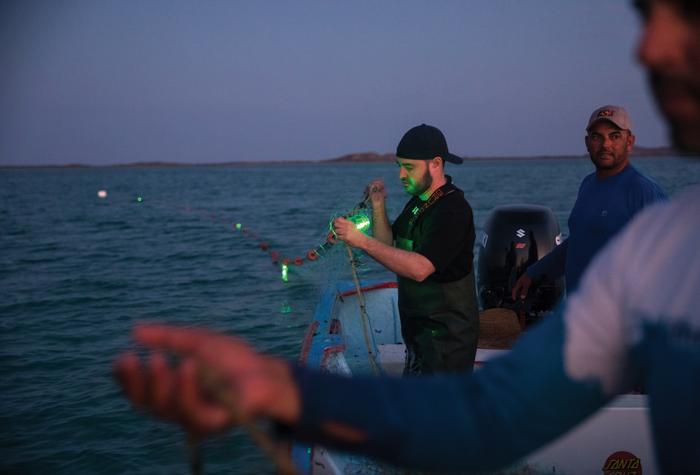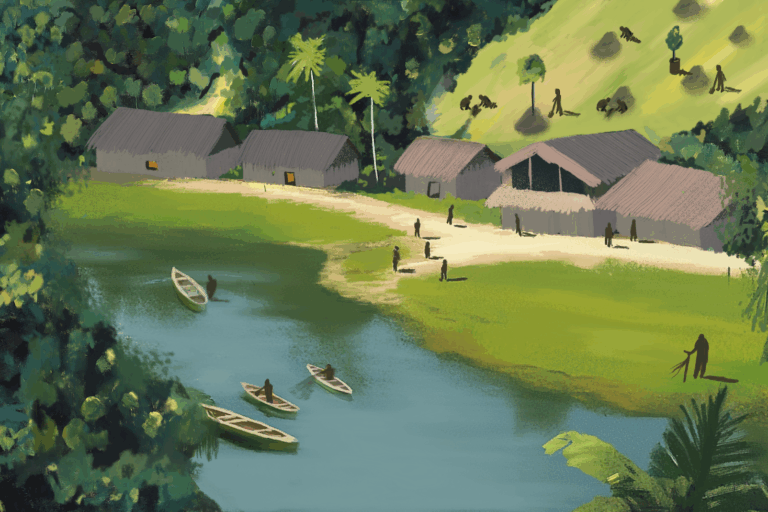
The decidedly odd-looking bumphead parrotfish is listed as Vulnerable. Photo by: Kurt Gross.
Bumphead parrotfish are noisy feeders. They break off large branches of corals using their powerful beaks, grind them up in their bodies to extract nutrients, and expel the undigested material in large cloudy plumes of feces.
Their voracious feeding is, however, not just a loud, messy affair. During the course of their feeding, bumphead parrotfish (Bolbometopon muricatum) also change the coral reef ecosystem in numerous ways, a new study published in Conservation Biology has found.
To understand how they influence the reef-ecosystem, Douglas McCauley from the University of California Santa Barbara and his colleagues, tracked five individual bumpheads at two remote locations in the Pacific Ocean, sometimes for up to six hours. Every time a fish took a bite, defecated or moved, they took note.
“We had to eat power bars and drink juice squeezes underwater in order not to lose the fish,” McCauley, lead author of the study, told mongabay.com.
 A school of bumphead parrotfish. Photo by: David Henshaw. |
With almost 30 hours of observations in hand, the researchers discovered that bumphead-coral interactions are a complex mix of positive and negative effects.
For instance, each bumphead gobbles up over two tons of living corals annually. Consequently, these reef-fish reduce the size, abundance, and diversity of the corals in the region. And, when the giant bumpheads defecate, their fecal plumes land on corals, coating them with carbonate sediments that can potentially stress corals.
But these “emerald-green, pink-nosed reef ogres,” as McCauley refers to them, also help the corals in several ways. One such way includes the dispersal of corals.
“This surprised us,” McCauley said. “Animal-aided dispersal is common on land (for example, birds and mammals disperse seeds), but extremely rare in the oceans.”
Each time a bumphead feeds, it yanks-off a coral branch, producing numerous coral fragments. As it swims around with the branch in its clumsy beak, some fragments fall onto the ocean floor.
“We estimated that about 14 fragments of living corals were produced every hour by a feeding bumphead,” said McCauley. “As it is with terrestrial seed dispersal, many of these fragments simply die. But we are certain that at least a small fraction of these dispersal coral pieces grow into new colonies.”
Bumpheads also reduce macroalgae (or seaweed), which can potentially outcompete corals.
Bumphead overall impacts, however, are not straightforward. Their effects depend on a number of factors such as their abundance, which in turn is determined by the presence of their predators—reef-sharks and humans.
For instance, areas in which over-fishing has reduced shark numbers, bumpheads can reach high densities. In such cases, their negative impacts on corals may outweigh their positive effects. The researchers, however, caution that their observations of shark-bumphead dynamics are still preliminary.
 The bite mark of a bumphead parrotfish on coral. Photo by: Douglas McCauley. |
Given the large scale of complex impacts bumpheads have on coral reefs, McCauley likens them to elephants in African savannas.
Both elephants and bumpheads are large, charismatic species in their respective ecosystems. Both are threatened by extinction—bumpheads are considered Vulnerable by the IUCN Red List–and both can have mixed impacts on their ecosystems.
While large-bodied elephants can cause deforestation and reduce regional biodiversity in savannas, bumpheads too can reduce coral abundance and diversity in oceans.
But unlike elephants, bumpheads have not been as lucky on the conservation radar as the elephants.
“There is as much or more Serengeti-like drama playing out on coral reefs as in terrestrial ecosystems that are famously reported upon,” said McCauley. “An important job for scientists, naturalists, and NGOs is to work harder to make the richness and importance of lesser known marine species like bumpheads more accessible.”

Bumphead parrotfish. Photo by: Klaus Stiefel.
Citations:
- McCauley, D. J., Young, H. S., Guevara, R., Williams, G. J., Power, E. A., Dunbar, R. B., Bird, D. W., Durham, W. H. and Micheli, F. (2014), Positive and Negative Effects of a Threatened Parrotfish on Reef Ecosystems. Conservation Biology. doi: 10.1111/cobi.12314
Related articles
Scientists ask Australia to strengthen, not weaken, protection for Great Barrier Reef
(07/24/2014) A convening of nearly 600 tropical biologists and conservation scientists has called upon the Australian government to strengthen protection of the Australia’s Great Barrier Reef. The declaration, issued at the annual meeting of the Association for Tropical Biology and Conservation (ATBC), comes as Prime Minister Tony Abbott pushes to allow industrial dumping in the Great Barrier Reef Marine Park as well as port development in a nearby coastal area.
Fishing for coherent regulations along Fiji’s coral reefs

(07/16/2014) Will Fiji implement a much-needed update to its fisheries laws before the September election? If you want to quiet a room in Fiji or feel like a lobster in a boiling pot, bring up coastal fishing rights, and ask what’s happening with the plan to update the country’s fisheries laws.
Bigger than Mexico? Obama announces major expansion of Pacific protected area

(06/18/2014) President Obama announced yesterday he intends to drastically expand the Pacific Remote Islands Marine National Monument making what will likely be the largest marine protected area on the planet. While the full extent of the ocean park has yet to be determined, it could potentially protect over two million square kilometers, an area larger than Mexico.
Seafood apartments and other experiments in fixing Indonesia’s fisheries (Part IV)

(07/25/2014) Shrimp farms, industrial plants, and one of Indonesia’s busiest thoroughfares make up Java’s north coast today. It’s a very different scene from the fishing villages with beachfront boat parking that stood here decades earlier. Which begs the question, where will fish live in this new ‘coast without mangroves, without coral, without seagrass,’ asks Alan Koropitan, a marine biologist based at Bogor Agricultural University.
Over-depleted and undermanaged: can Indonesia turn around its fisheries? (Part III)

(07/22/2014) Compared to maritime ministries worldwide, Indonesia’s Ministry of Marine Affairs and Fisheries (MMAF) is a teenaged neophyte. The governing body was formed a mere 13 years ago;a staggering fact for a country made up of two-thirds water where many of the 250 million people depend on fish for both protein and income. Mongabay.org’s SRI Fellow Melati Kaye reports on the state of Indonesian fisheries in the third installment of a four-part series.
Boom but mostly bust: fighting over sardines in Indonesia’s Bali Strait (Part II)

(07/18/2014) Fifty-five crewmen, stripped to their briefs, sing Madurese sea shanties to synchronized gestures as they haul in giant seine nets, hand-over-hand, onto the swaying wooden deck of the M/V Sinar Indah out in the middle of the Bali Strait. This morning they had offloaded a bumper haul at their homeport of Muncar: seven tons of lemuru sardines Sardinella lemuru, the local specialty, for which dockside cannery agents offered $3,500.
A tale of two fish: cyanide fishing and foreign bosses off Sulawesi’s coast (Part I)

(07/08/2014) In spring and summer, after the monsoon storms have passed, the fishing boats set out again from tiny Kodingareng Island in the Spermonde Archipelago off the coast of South Sulawesi. In the afternoon heat, Abdul Wahid joins his fellow fishermen in the narrow shade of the beachfront village houses to check out the daily fish prices.
Deforestation reduces the size of fish
(06/17/2014) Loss of forest cover can dramatically affect local fish populations, finds a study published in the journal Nature Communications.














